Cherry Eye Surgery for Dogs in Orange County, CA: Causes, Treatment, and Costs
Key Takeaways
What is Cherry Eye in Dogs?
Cherry eye in dogs is a common condition where the nictitating membrane, also known as the third eyelid, becomes prolapsed. This results in a red, swollen mass appearing in the inner corner of the dog’s eye, resembling a cherry—hence the name. The third eyelid gland plays a critical role in tear production, contributing up to 50% of the aqueous layer of a dog’s tear film. When this gland becomes displaced, it not only causes a cosmetic issue but can also lead to dry eye (keratoconjunctivitis sicca), irritation, and potential long-term vision problems if left untreated.
In Orange County, CA, where many families are dog owners, recognizing the signs of cherry eye early can prevent discomfort and more serious complications. The warm climate, outdoor activities, and exposure to environmental irritants may exacerbate eye conditions, making it essential for pet owners to be vigilant. At Bliss Animal Hospital, we frequently see cases of cherry eye and are equipped with the expertise and tools to manage and treat this condition effectively.
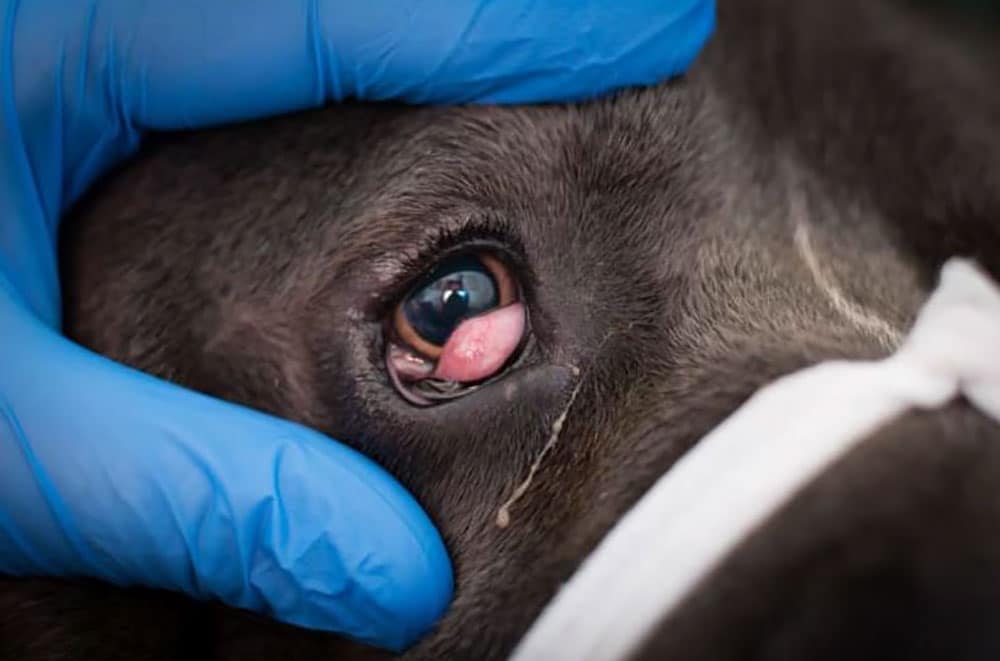
Image 1: A dog with cherry eye, showing a prolapsed third eyelid gland. Prompt veterinary care can prevent complications and restore eye health. Source: www.northwestanimaleye.com
What Causes Cherry Eye in Dogs?
Cherry eye in dogs occurs when the connective tissue that holds the third eyelid gland in place weakens or breaks, leading to gland prolapse. While the exact cause isn’t always clear, genetics often plays a significant role. Some dogs are born with weaker connective tissues, making them more prone to this condition. Additionally, factors such as inflammation, trauma, or congenital defects can contribute to the development of cherry eye.
In Orange County, CA, active lifestyles and outdoor environments expose dogs to dust, allergens, and debris, which may irritate their eyes and exacerbate conditions like cherry eye. Understanding the causes helps pet owners in the area take preventive measures, such as regular eye check-ups and prompt treatment of any signs of irritation. Bliss Animal Hospital is well-versed in identifying the underlying causes of cherry eye and providing tailored treatment plans for your pet.
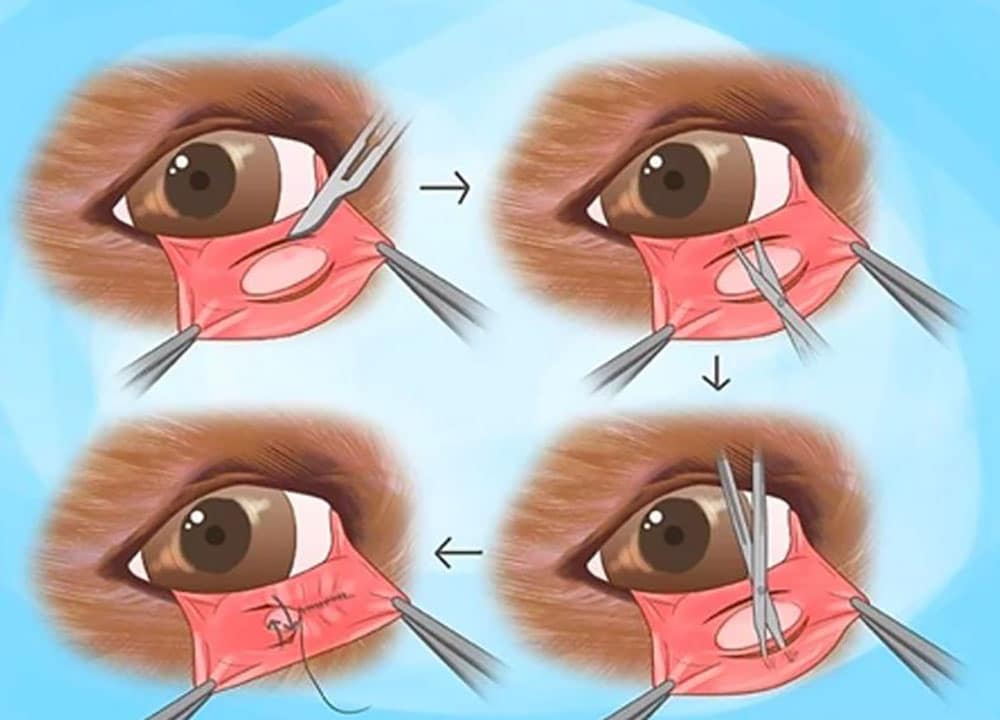
Image 2: Illustration of cherry eye surgery in dogs: Step-by-step depiction of the surgical technique used to reposition and secure the prolapsed third eyelid gland. Source: berwickclydevet.com.au
Which Breeds Are More Susceptible to This Condition?
Certain breeds are genetically predisposed to cherry eye due to the structure of their facial anatomy and the inherent weakness in their connective tissues. Breeds commonly affected include:
Many of these breeds are popular among pet owners in Orange County, CA, making cherry eye a frequent concern for local veterinarians. The brachycephalic (short-nosed) breeds, such as French Bulldogs and Pugs, are particularly susceptible due to their unique facial structures. At Bliss Animal Hospital, we have extensive experience treating cherry eye in these breeds, ensuring that your beloved pet receives the specialized care they need.
Image 3: Before and right after cherry eye surgery: The left image shows a prominent prolapsed gland, while the right image displays reduced swelling and successful gland repositioning immediately following surgery.
Can Cherry Eye Be Fixed Without Surgery?
While some cases of cherry eye may initially respond to non-surgical treatments, such as anti-inflammatory eye drops or manual massage techniques, these methods often provide only temporary relief. The prolapsed gland is unlikely to return to its proper position permanently without surgical intervention. Leaving cherry eye untreated or relying solely on non-surgical methods can lead to chronic irritation, dry eye, and even corneal ulcers.
In Orange County, CA, where pet owners are highly engaged in their pets’ health and well-being, it’s important to consider the long-term benefits of surgery. At Bliss Animal Hospital, we prioritize the health of your pet’s eyes and will discuss all treatment options, including when surgery is the most effective and humane choice. Our veterinary team is skilled in performing cherry eye surgeries with minimal discomfort and quick recovery times for your pet.
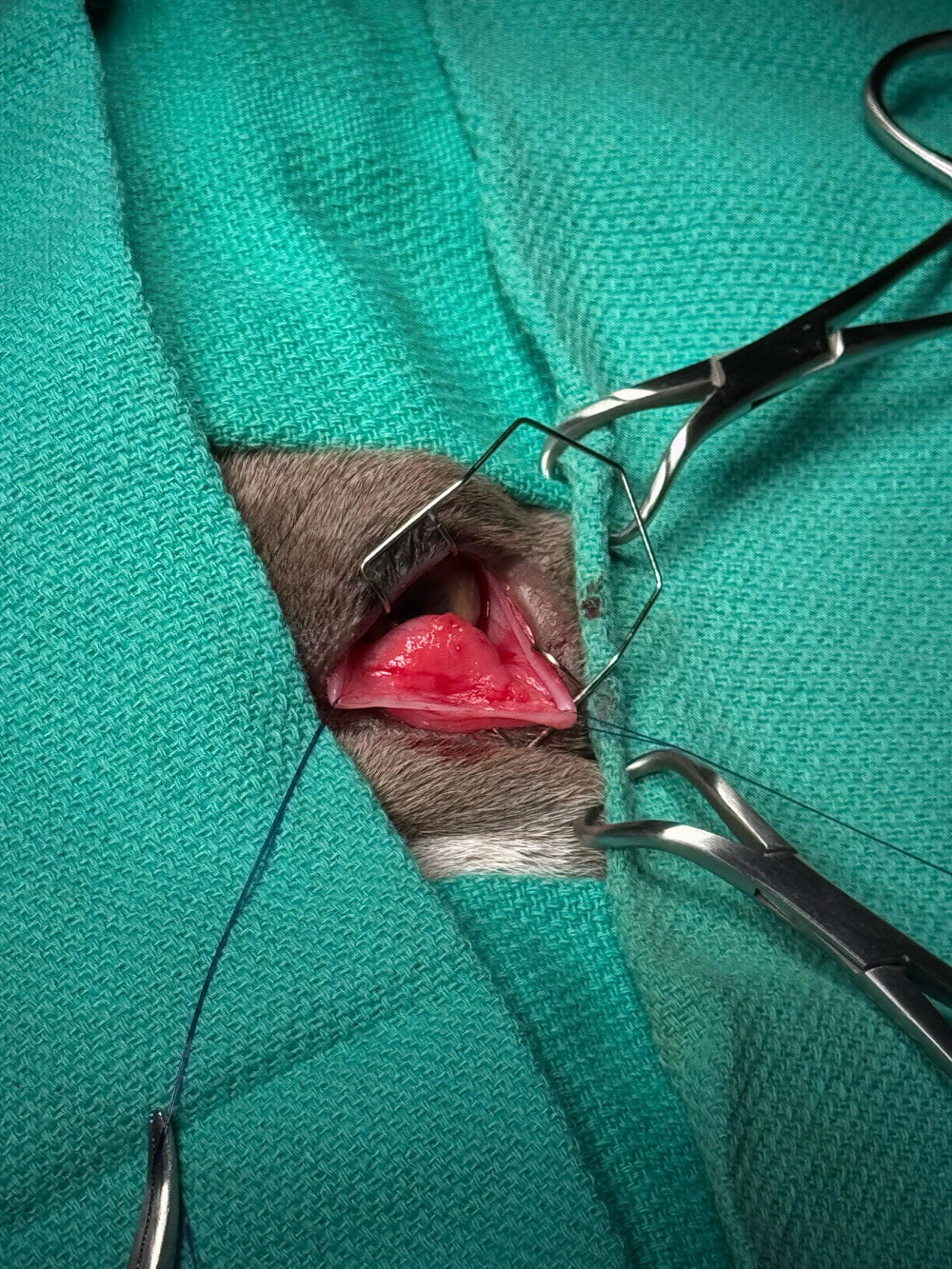
Caption: Intraoperative view of cherry eye surgery: The prolapsed third eyelid gland is carefully exposed and repositioned using surgical instruments and fine sutures to preserve gland function and restore normal eye anatomy.
How Much Is Cherry Eye Surgery in Dogs?
The cost of cherry eye surgery for dogs can vary depending on several factors, including the severity of the condition, whether one or both eyes are affected, and the type of surgical technique used. On average, pet owners in Orange County, CA can expect the surgery to cost between $500 and $1,500 per eye. This price typically includes pre-surgical consultations, anesthesia, the procedure itself, and post-operative care.
At Bliss Animal Hospital, we strive to offer transparent pricing and affordable care without compromising quality. We understand that veterinary expenses can be a concern, which is why we provide detailed estimates and flexible payment options, including pet insurance and financing through CareCredit. Our team will work with you to ensure your pet receives the best care possible within your budget. If you’re concerned about the cost of cherry eye surgery, we can also discuss pet insurance options that may help offset the expense.
Video: Watch the cherry eye surgery procedure in action: A step-by-step look at how veterinarians carefully reposition the prolapsed third eyelid gland to restore your dog’s eye health.
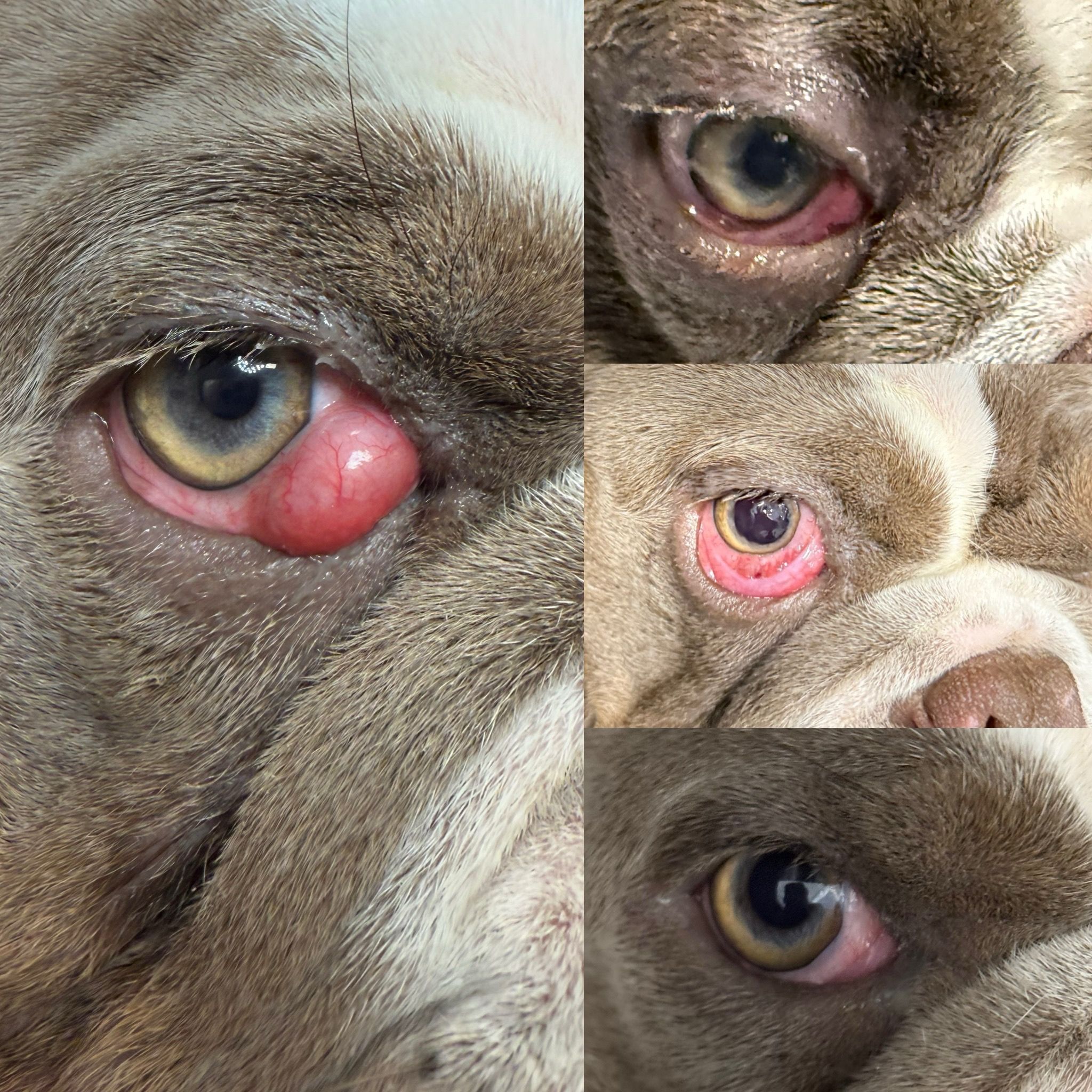
Caption: This image shows the full recovery journey from cherry eye surgery: the left photo captures the prolapsed gland before surgery, the top right shows the eye immediately post-operation with mild swelling, the middle right displays healing progress at two weeks, and the bottom right reveals a healthy, fully recovered eye 7–8 weeks later, with the gland successfully repositioned and no visible signs of irritation.
Conclusion
Cherry eye in dogs may seem alarming at first, but with prompt veterinary care, it can be effectively managed and treated. Understanding the causes, symptoms, and treatment options empowers pet owners in Orange County, CA to make informed decisions about their dogs’ health. At Bliss Animal Hospital, we specialize in providing compassionate, expert care for conditions like cherry eye, ensuring your pet’s comfort and well-being every step of the way.
If you believe your dog is showing signs of cherry eye or other eye-related issues, please contact Bliss Animal Hospital at (949) 354-5201 to schedule a consultation. Our experienced team in Orange County, CA is here to help your pet feel better and see clearly again!
About Bliss Animal Hospital
Our team, led by Dr. Nayara Pataro and Dr. Sam Amirshahi, is dedicated to providing compassionate, top-rated care right here in South Orange County. With a strong emphasis on relationships and personalized veterinary care, we’re here to support you and your pet’s health and happiness. If you’re looking for convenient, high-quality care nearby, check out our veterinarian services in Lake Forest, CA and surrounding areas like Veterinarian near Mission Viejo, CA, Irvine, CA Veterinarian (Great Park and Portola Springs) and vet near Rancho Santa Margarita, CA.

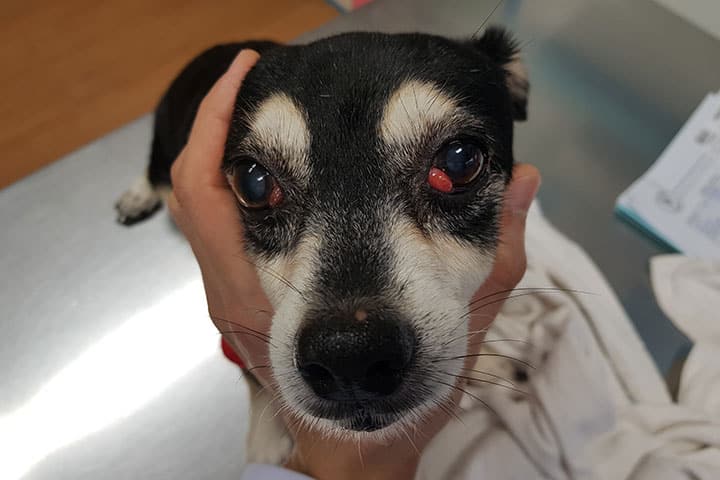

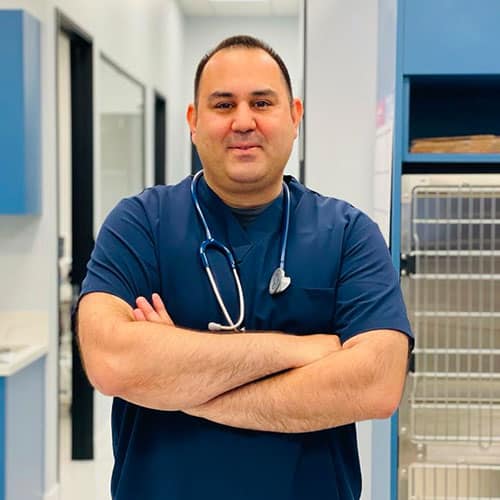
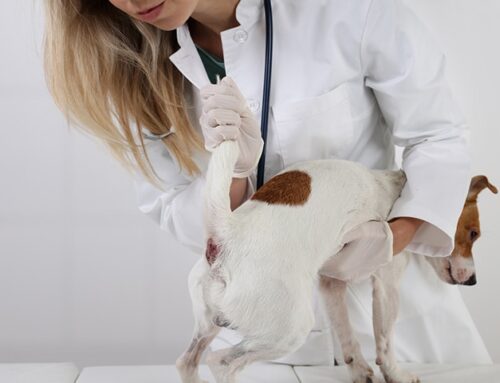


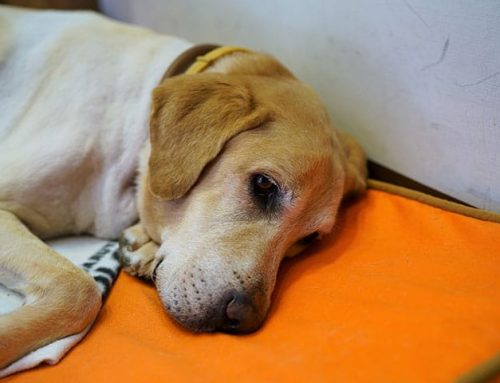



Leave A Comment